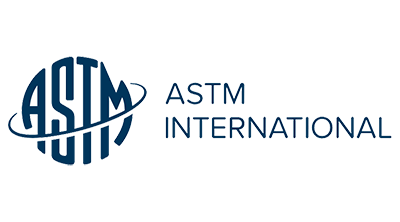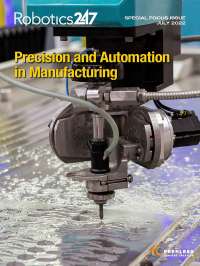As robot manufacturers develop their systems to work in tandem with humans, several regulatory bodies around the globe are working on making sure those vendors are building with safety in mind. From the International Organization for Standardization to the American National Standards Institute, experts regularly convene to outline what robot makers should consider when building their machines.
That work is ongoing, and these organizations continue to make changes as technologies improve and robots begin to be used for more applications. Luckily, the groundwork has been laid, Aaron Prather, director of robotics and autonomous systems at ASTM International, a global standards group, said in an interview with Robotics 24/7. But standards bodies must work fast to keep up with the changing industry.
“We have good bones is what I would say,” Prather said. “But we've got a lot of work to do just to keep up. Also, we need to address some of the bureaucracy that exists within the standards framework.”
While many safety guideliness are voluntary in the U.S., companies have been incentivized to implement them to increase the safety of their systems. And in other parts of the world, particularly in Europe and Canada, governments are increasingly requiring more specific robotic safety measures.
Updates coming to ISO 10218

There is some work being done to update the current standards. One of the most foundational documents outlining robot safety is ISO 10218, which is broken up into two parts.
Part 1 addresses the requirements of robots, and Part 2 addresses integrating robots into a system, Carole Franklin, director of standards development at the Association for Advancing Automation (A3 and formerly the Robotics Industries Association), told Robotics 24/7.
The two parts are being updated for the first time since the last version was published in 2011, and the International Organization for Standardization (ISO) plans to add a Part 3 to focus on end users.
The participants hope that the updated document will be published by the end of the year, Franklin said. It is currently going through ISO's review process.
Franklin noted that there are some misconceptions about collaborative robots as they relate to safety. For the safety community, a more accurate description of a cobot arm is a power- and force-limited robot or a PFL.
In addition, it's possible for a manufacturer to use an industrial robot arm for a collaborative application if it has the correct safety functions and safety programming. It is not the robot arm itself that is collaborative, but rather the specific application or system it is being used for or in, Franklin argued.
“This new edition of 10218, for one thing, has integrated the concept of collaborative robot safety throughout the whole document,” she said. “In the past, the guidance for collaborative safety was found in ISO technical specification 15066, and the contents of 15066 has been integrated into 10218 in the update.”
Robot safety needed for new settings
ASTM's Prather noted that much of the standards work surrounding robotics has focused on industrial automation. Standards involving service robots being used around the public are less robust.
“Delivery robots? Who do they fall under?” Prather asked. “When I bring that question up, some states' local departments of transportation say, 'Yeah, we should address them.' Some states are like, 'No, that should be done at the federal level.' Who is it?”
Similar challenges arise with robots used in healthcare settings or restaurants.
Franklin echoed Prather's sentiment.
“Robots have begun to move out of where they have been for the past few decades, which was manufacturing,” she said. “Now, we're seeing them performing various services for people.”
Franklin noted, however, that the vast majority of robots in use and sold today are still in the industrial sphere. Sensor providers such as SICK Inc. and software providers such as FORT Robotics have focused on industrial applications.
Veo Robotics unlocks collaborative applications for industrial robots
Waltham, Mass.-based Veo Robotics Inc. develops systems designed to make industrial robot arms more collaborative. The company said its FreeMove system takes advantage of 3D simulations along with “dynamic speed and separation monitoring as defined by ISO 10218-2:2011 and ISO/TS 15066:2016.”
Patrick Sobalvarro, CEO of Veo Robotics, asserted that safety has to be foundational when building any robotic system.
When identifying safety functions in a system, for example, you have to understand the failure rates of the parts that make up that function, said Sobalvarro. Some components don't offer great fail rate numbers, he noted.
In addition, placing an emphasis on safety can be expensive and time-consuming, added Sobalvarro.
Veo Robotics started selling the first FreeMove system in 2019. The company sold a number of them to a number of big manufacturing customers, but they wanted versions that were safety-certified. That proved to be a long process, Sobalvarro recalled.
“Getting to safety certification took us another two years with a 35-person engineering team,” he said. “They weren't sitting on their hands or wasting time playing Call of Duty. They were working hard.”
Veo Robotics put a couple of measures into place to ensure that it was doing things correctly. It kept separate code bases for the unsafe version of the system that was solely used for research purposes and the one going through the certification process.
“We didn't allow any of that [unsafe] code into the functionality safe code repository,” Sobalvarro said. “We had to build that from the ground up to understand all the failure modes and so on. That's a tremendously expensive thing to do.”
Most the engineers at Veo Robotics work in software, ensuring its systems are running optimally and safely, he added. That requires the team to go through a maintenance review with TUV Rheinland anytime the company updates or modifies its software.
“In the software world, there is a huge penalty in doing something that you know is going to be safe,” said Sobalvarro. “It's hard. It took us two extra years of full-time work by a very competent team.”
Sevensense Robotics gives mobile robots visual AI capabilities
One way in which autonomous mobile robot (AMR) providers approach safety is by retrofitting their systems with safety-certified lidar sensors, noted Gianluca Cesari, co-founder and chief business development officer of Sevensense Robotics. However, depending on the application, an AMR maker might forgo using lidar sensors and instead use other sensor modalities, he said.
Cesari highlighted the cleaning robot Marvin as an example. The robot, which is developed by the Swiss company Wetrok AG, a customer of Sevensense Robotics, takes advantage of components such as thermal cameras, passive cameras, and time-of-flight cameras to provide vision data.
Sevensense Robotics designed an autonomous navigation stack to help mobile robots perceive and maneuver through their environments. Its systems take advantage of visual simultaneous localization and mapping (vSLAM) and a camera system to allow robots to construct accurate 3D maps of their environment.
In 2021, ABB partnered with the company to take advantage of its vSLAM on its lineup of AMRs.
“With vision, we gain higher-context information about the environment,” Cesari said. “This allows the system to run more robustly, especially when you look at the 3D space, not only for localization, but also for finding obstacles.”
About the Author
Follow Robotics 24/7 on Linkedin
Article topics
Email Sign Up






















